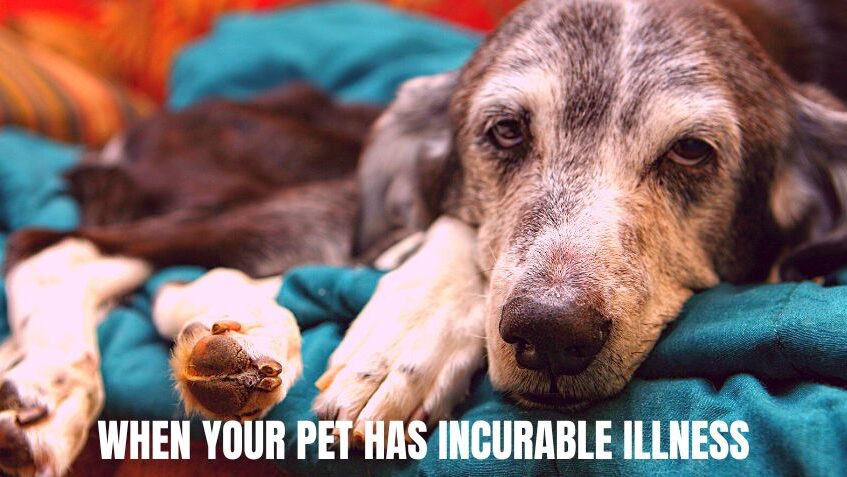When Your Pet Has an Incurable Illness
When your pet has an incurable illness, it can be a challenging and emotional time. Here are some compassionate and practical steps to consider:
- Consult with a Veterinarian: Your first step should be to consult with your veterinarian. They can provide a proper diagnosis, prognosis, and guidance on managing your pet’s condition. Ask about available treatment options, including palliative care, to improve your pet’s quality of life.
- Quality of Life Assessment: Evaluate your pet’s quality of life. Consider factors like pain, mobility, appetite, and overall happiness. Your veterinarian can assist in this assessment. If your pet’s quality of life is significantly compromised, it may be time to consider their comfort and well-being.
- Discuss Options: Have an open and honest conversation with your veterinarian about the prognosis and what to expect in the coming weeks or months. Discuss the available options, including palliative care, pain management, and hospice care.
- Palliative Care: Palliative care focuses on providing comfort and relief from symptoms rather than curing the illness. Your veterinarian can help you develop a palliative care plan that may include pain medications, dietary changes, and other supportive measures to improve your pet’s comfort.
- Hospice Care: In some cases, hospice care can be considered. This involves providing end-of-life care at home, making your pet as comfortable as possible, and ensuring they have a peaceful and dignified passing. Hospice care may include medications, special bedding, and regular monitoring.
- Emotional Support: Caring for a pet with an incurable illness can be emotionally taxing. Seek support from friends, family, or a support group for pet owners facing similar situations. Don’t hesitate to reach out to a mental health professional if needed.
- Spend Quality Time: Make the most of the time you have left with your pet. Spend quality time together, engaging in activities your pet enjoys. Create lasting memories and cherish the moments you have.
- Advance Planning: Consider the practical aspects of your pet’s end-of-life care, including euthanasia if that becomes the most humane option. Discuss these decisions with your veterinarian in advance, so you are prepared when the time comes.
- Euthanasia: If your pet’s suffering becomes unbearable, and their quality of life is severely compromised, euthanasia may be the most compassionate choice. It allows your pet to pass peacefully, without pain and suffering. Your veterinarian can guide you through the process and help you say goodbye.
- Memorializing Your Pet: After your pet passes, consider ways to memorialize and remember them. This may include creating a scrapbook, planting a tree or flower in their honor, or making a donation to an animal charity.
It’s important to prioritize your pet’s well-being and comfort throughout their illness. The decision-making process can be emotionally challenging, but the well-being of your pet should be at the forefront of your considerations. Seek guidance and support from your veterinarian, and take the time you need to make the best decisions for your beloved companion.
You may also visit – https://www.facebook.com/angkopparasahayop





